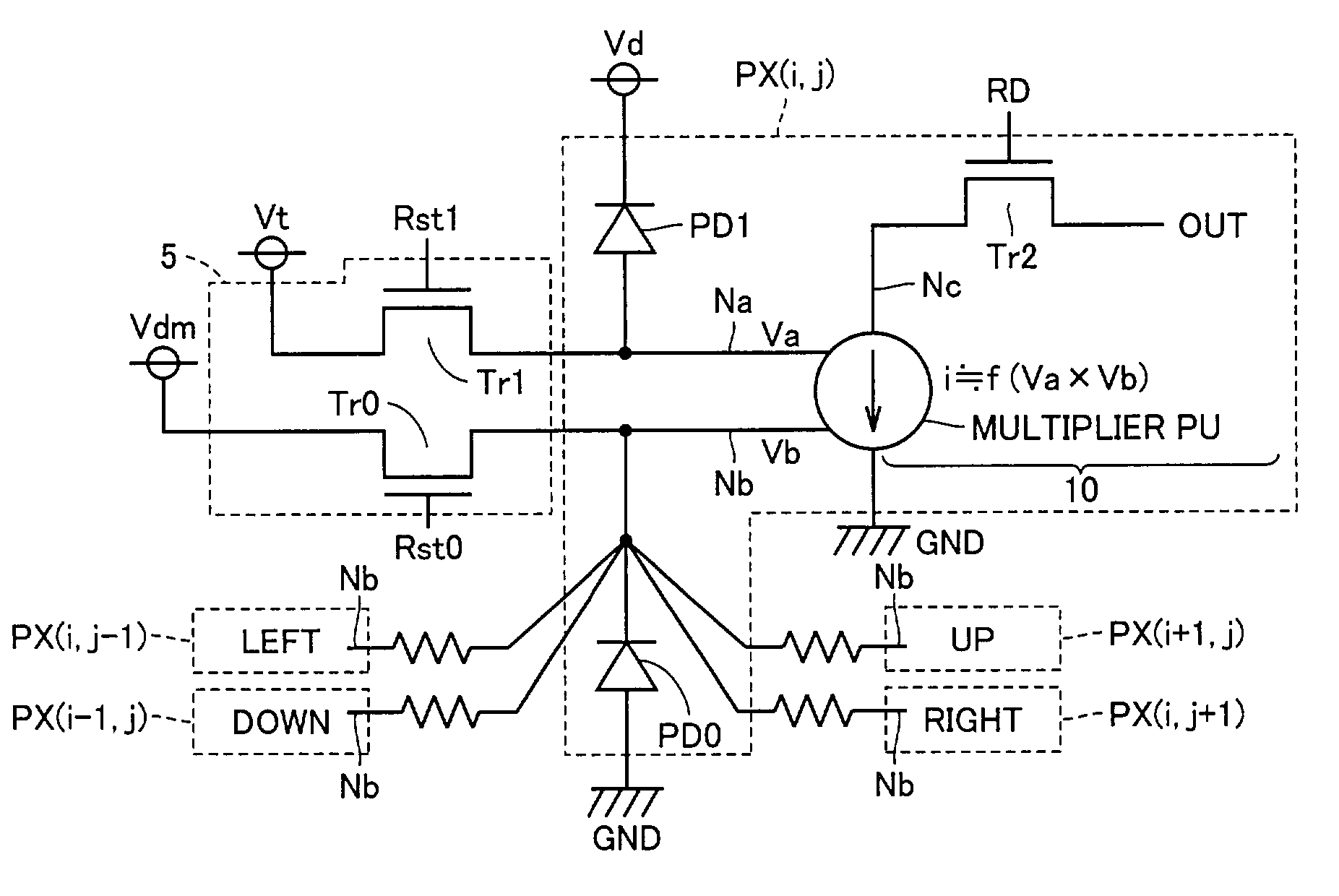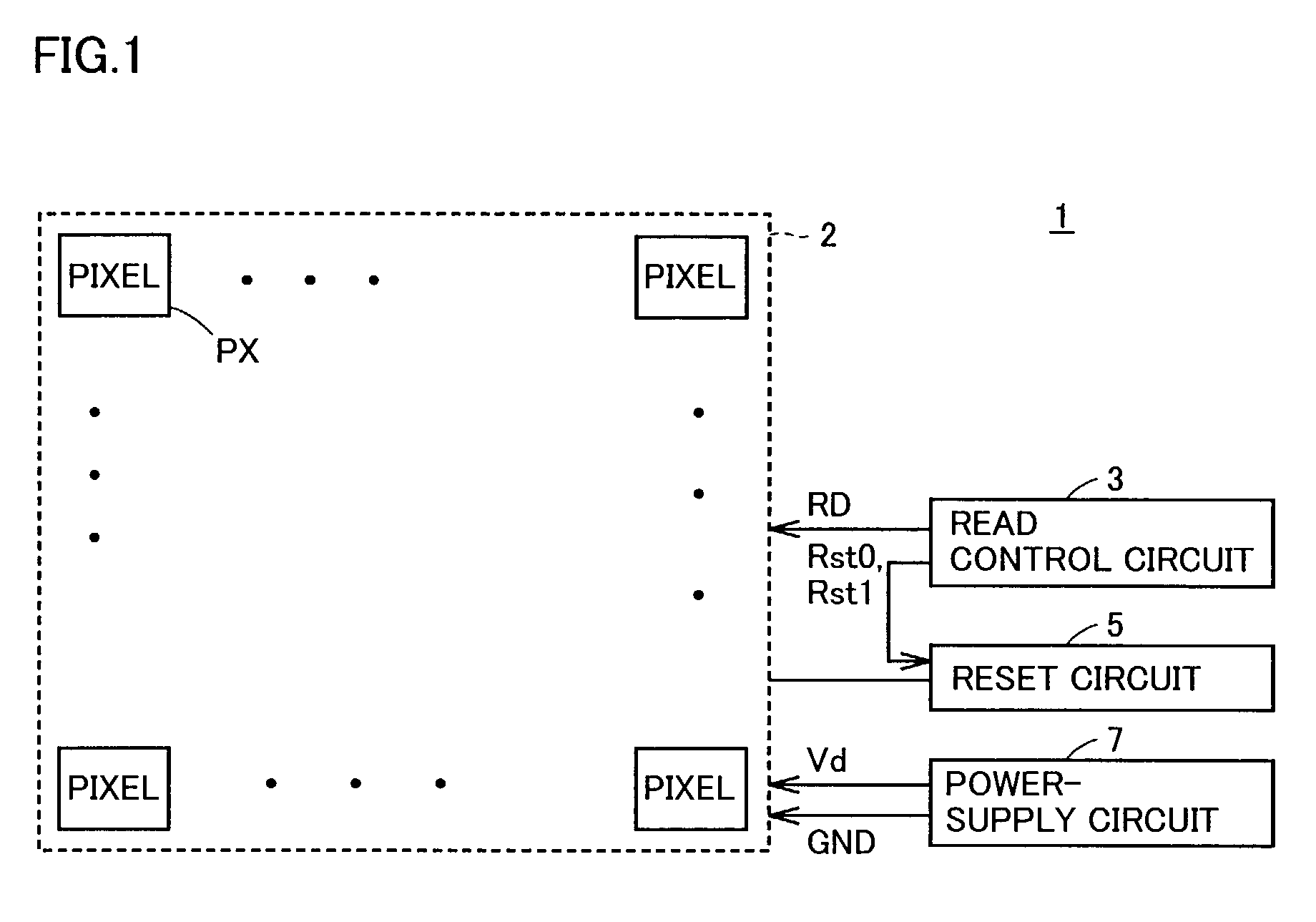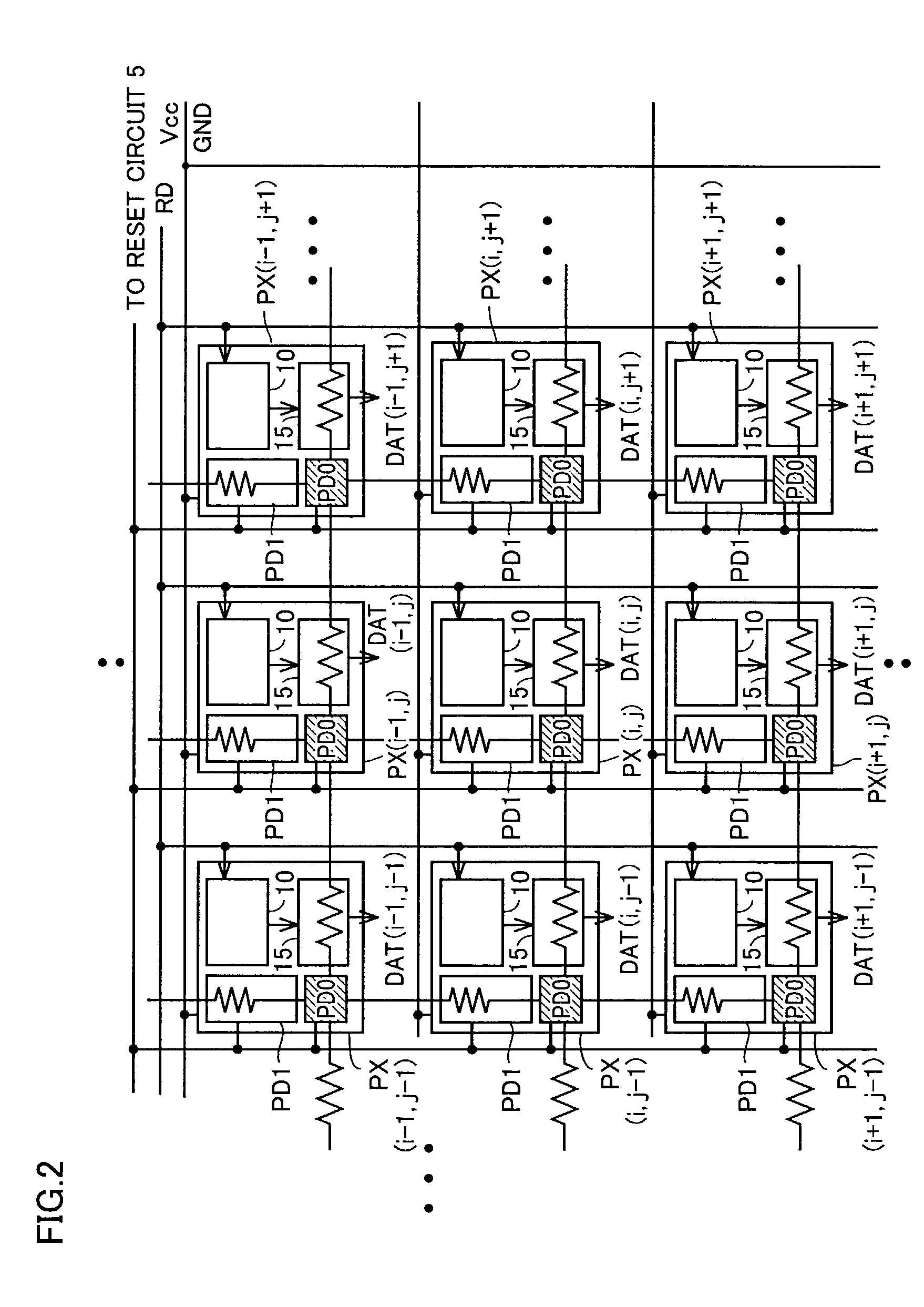Image pickup device with high contrast detection capability
a pickup device and detection capability technology, applied in the field of image pickup devices, can solve the problems of difficult to obtain sufficient contrast in both brighter and darker portions of the field of view at the same time, and the sensibility of human vision is much inferior, so as to achieve excellent imaging, close human perceptual ability, and sufficient contrast
- Summary
- Abstract
- Description
- Claims
- Application Information
AI Technical Summary
Benefits of technology
Problems solved by technology
Method used
Image
Examples
first embodiment
[0056]Referring to FIG. 1, an image pickup device 1 according to the present invention includes a pixel array 2 in which a plurality of pixels PX are arranged in a matrix of rows and columns, a read control circuit 3, a reset circuit 5 and a power-supply circuit 7.
[0057]Read control circuit 3 generates a control signal RD for controlling timing of image data generation in pixel array 2. Reset circuit 5 periodically resets the state of a receiving-light detecting element in each pixel PX. The timing of resetting operation by reset circuit 5 is controlled by reset signals Rst0, Rst1 from read control circuit 3. Power-supply circuit 7 supplies a power-supply voltage Vd and a ground voltage GND to each pixel in pixel array 2.
[0058]FIG. 2 is a block diagram illustrating a configuration of each pixel. In FIG. 2, pixel PX (i, j) in the i-th row and the j-th column (i, j: natural numbers) and pixels adjacent thereto are representatively shown among the plurality of pixels arranged in rows a...
second embodiment
[0078]In the second embodiment, a configuration of multiplier PU suitable for such control of the signal amplification factor will be described. In the second embodiment, an MOS transistor that can control a gain coefficient β in accordance with an input voltage to a control gate (hereinafter also referred to as “A-MOS (Adjustable β-MOS) device”) is used to realize the function of automatically adjusting a receiving-light sensitivity characteristic per pixel.
[0079]Referring to FIG. 5, the A-MOS device includes, in addition to a normal gate GR, a source SR and a drain DR that are similar to those in a normal MOS transistor, a control gate CG formed at a certain angle with the normal gate.
[0080]FIG. 6 is a schematic view showing parameters for configuration of the A-MOS device.
[0081]Referring to FIG. 6, the A-MOS device has, as configuration parameters, a gate length Lr and a gate width Wr of normal gate GR, and an angle θ formed by normal gate GR and control gate CG.
[0082]FIGS. 7A an...
third embodiment
[0092]In the third embodiment, effective arrangement of two photodiodes provided in each pixel will be described.
[0093]FIG. 9 is a structural view showing an arrangement example of photodiodes according to the third embodiment.
[0094]Referring to FIG. 9, a PN junction formed between a P-type silicon substrate (P-sub) 20 on which an image pickup device is formed and an N-well 21 provided on P-type silicon substrate 20 is used to form photodiode PD0 for detecting an average amount of light in a peripheral region.
[0095]Further, a PN junction formed between a P+ region 22 formed within N-well 21 and N+ region 23 formed within P+ region 22 is used to form photodiode PD1 for detecting an amount of light entering into the corresponding pixel. It is noted that P+ region 22 and N+ region 23 are heavily doped compared to P-type silicon substrate 20 and N-well 21.
[0096]P+ region 22 and N+ region 23 are provided independently for each pixel. Further, a plurality of pixels created in the same N-w...
PUM
 Login to View More
Login to View More Abstract
Description
Claims
Application Information
 Login to View More
Login to View More - R&D
- Intellectual Property
- Life Sciences
- Materials
- Tech Scout
- Unparalleled Data Quality
- Higher Quality Content
- 60% Fewer Hallucinations
Browse by: Latest US Patents, China's latest patents, Technical Efficacy Thesaurus, Application Domain, Technology Topic, Popular Technical Reports.
© 2025 PatSnap. All rights reserved.Legal|Privacy policy|Modern Slavery Act Transparency Statement|Sitemap|About US| Contact US: help@patsnap.com



